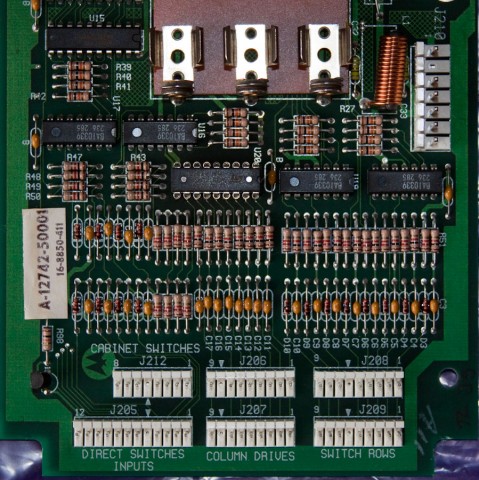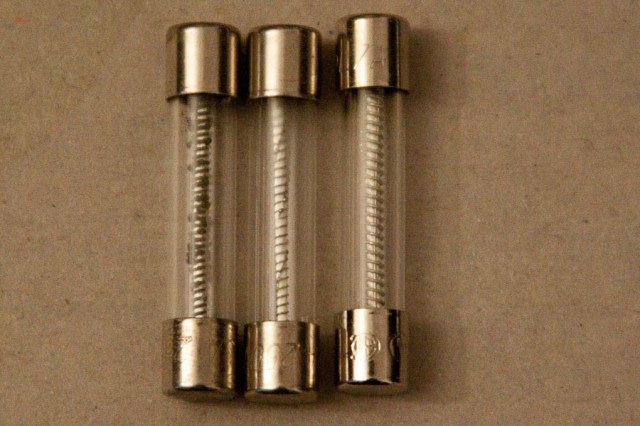Location: Centennial, Colorado.
Symptom: Visible smoke coming from jukebox.
The owner said the smoke was visible at the front of the jukebox. This could have been the mechanism or the selector switches, or even something from down below. I visually checked the latch solenoid, but I didn’t notice anything wrong.
I checked the fuses and none were blown. I carefully powered up the jukebox. The jukebox was in the middle of playing a record when it was shut down, so it continued playing the record when I powered it up. All seemed normal.
After a while, smoke did appear and it was coming from the latch solenoid behind the selector switches.
This is a common problem. The solenoid isn’t designed for continuous use. Under normal circumstances, a person deposits coins, the solenoid energizes, the person makes selections until their credits are used up, then the solenoid is de-energized. That process probably takes no more than 30 seconds.
In this case, the jukebox had a small pushbutton switch on the rear that gave three credits every time it was pressed. It was being used at a party and someone probably pushed the button a number of times establishing the maximum number of credits, then the person didn’t follow through and use all of the credits. Eventually the latch solenoid overheated and shorted.
Victory Glass sells a solenoid protector that is plugged in between the Wired Selection Receiver and the selector keyboard. It has a small switch on it that selects between coin operation and free play. The advantage to this solenoid protector over the solutions provided from various internet sites (where the latch solenoid is wired to the hold relay), is that if a letter is selected without a number or vice versa, the solenoid eventually times out and releases after about 30 seconds. This is great if you have small kids around who might be randomly pressing buttons and then walking away.




